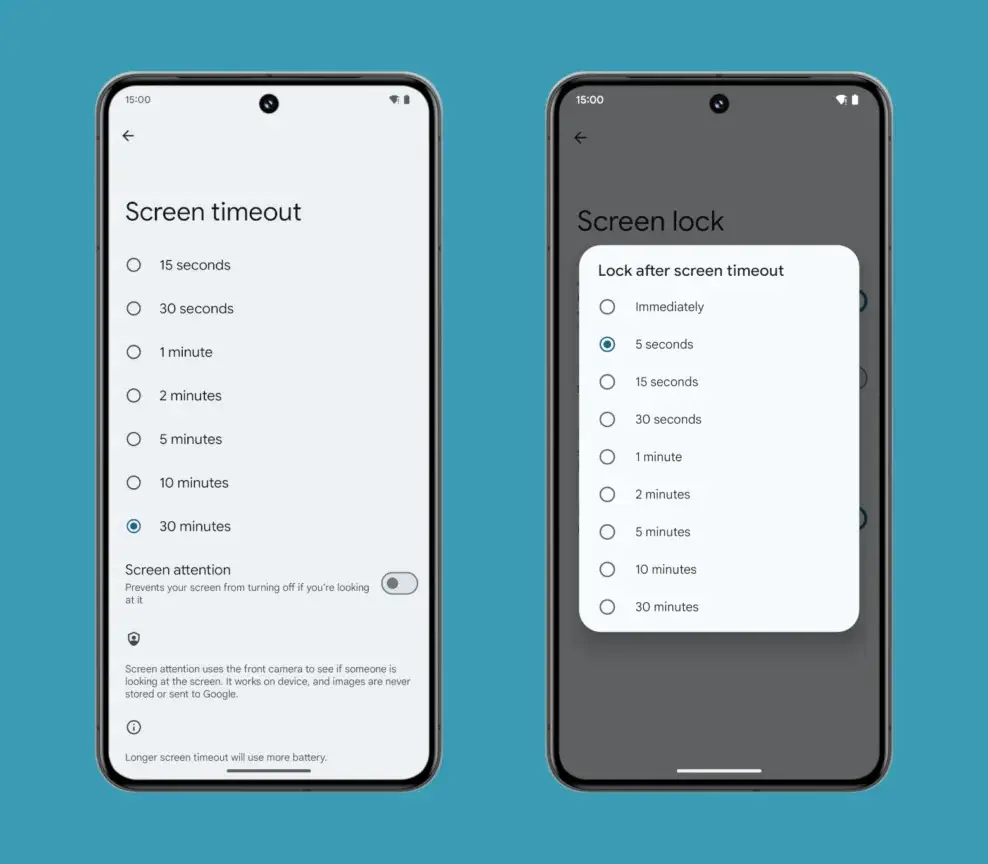- Google's Android 15 introduces "Adaptive Timeout" for improved security and battery life.
- Adaptive Timeout dynamically adjusts screen timeout based on user activity.
- Exclusive to Pixel devices, Adaptive Timeout marks a significant advancement in Android screen management.
Google has unveiled a feature set to debut in the upcoming Android 15 operating system: “Adaptive timeout”. This new feature designed to make screen management more revolutionary, will employ higher security standards and battery usage optimization for all Android users everywhere.
Android 15 Adaptive Timeout Feature Enhances Security and Battery Life
Unlike Android users who are accustomed to the standard screen timeout settings, a device lock and display that turns off is triggered after a specified time of inactivity. Also, the “background lighting” feature that is optional facilitates situations where screen illumination is demanded for a long time through the front-facing camera.
Adaptive Timeout in Android 15 is a characteristic that marks a very big step. This state-of-the-art feature dynamically adjusts the screen timeout depending on how the user has been using the phone recently.
Through the selective identification of periods of inaction, Adaptive Timeout elegantly reduces the screen timeout hence resulting in increased protection and longer battery life but without sacrificing user convenience.

The implementation of Adaptive Timeout heralds a twofold advantage: strengthened security and increased battery lifespan. The prompt screen dimming for the periods when there is no user activity is the essential feature that helps to reduce unauthorized access, thus, contributing to the security of the device. In addition, longer screen-off time leads to improved battery efficiency that enables devices to last longer for users.
Under the hood of Adaptive Timeout are secret information, presumably this feature makes extensive use of the sophisticated sensors the device is equipped with, such as the front-facing camera and other proximity sensors. These components aid the instantaneous discovery of a user presence, thus letting the system dynamically adapt screen timeout durations with exceptional efficiency and precision.
The preliminary understanding of Adaptive Timeout came from carefully reading code snippets of the Android 15 Developer Preview 2. Firstly, clues to the fact that this transformative feature will be exclusive to Google’s Pixel phones might be similar to the current screen attention. While that could happen at the official release of Android 15, the wider availability for the spectrum of Android devices is possible.
The introduction of Adaptive Timeout evidences Google’s consistent investment in security and human-centered design. The Android 15 possibly seems secure as well as optimizes the battery performance, so it will take the niche of screen management apart. With the launch of Android 15 allocated to the third quarter of 2024, there is a surge in excitement for users as well as developers for the major release of this cutting-edge technology.
Overall, Adaptive Timeout is a new paradigm in screen management that offers the future more intelligent and more secure as well as energy-efficient interactions. With Android’s new features to reshape the user experience, the inclusion of Adaptive Timeout reaffirms the main role of Google in defining the direction of mobile technology development.


